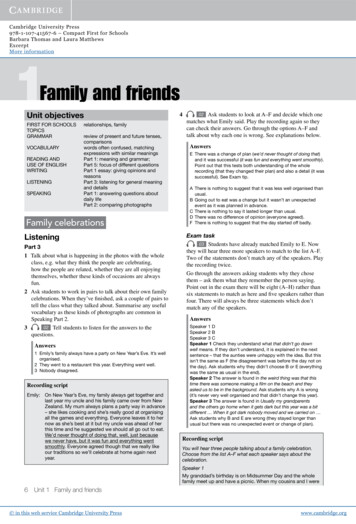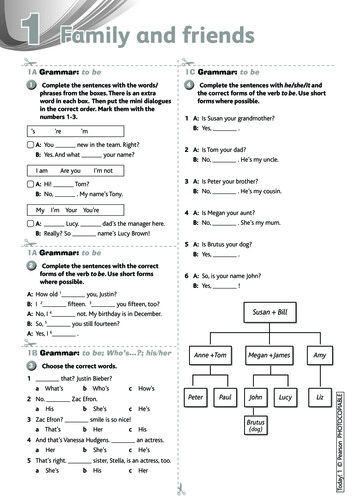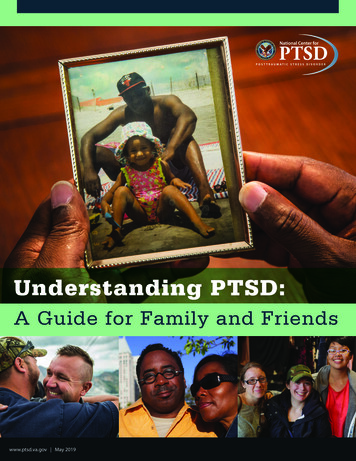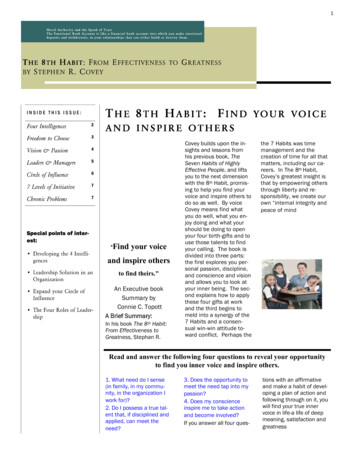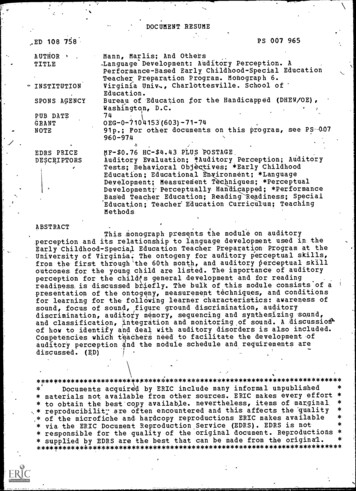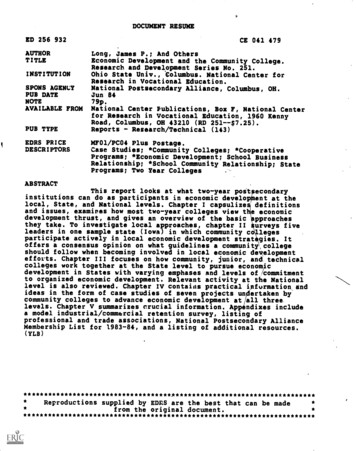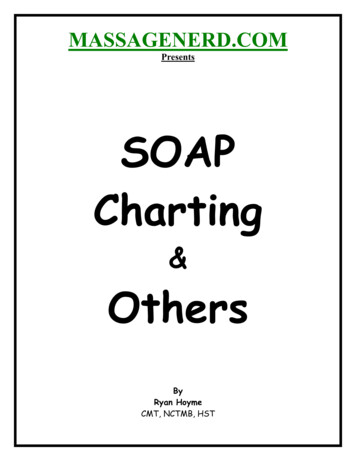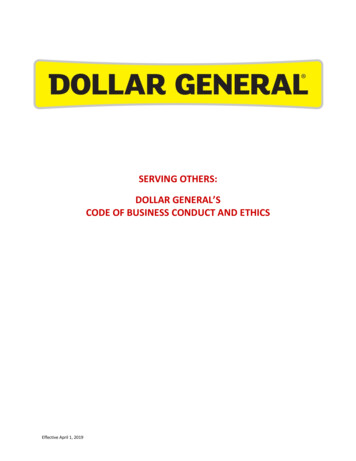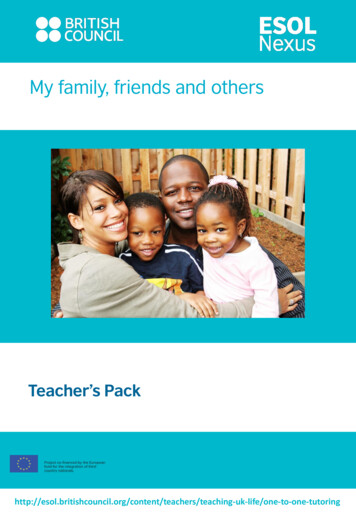
Transcription
My family, friends and othersTeacher’s s/teaching-uk-life/one-to-one-tutoring
My family, friends and others: introductionIntroductionMe and my family gives learners the language needed to be able to talk about themselves,their feelings and people around them. The main foci of the lessons in this pack arespeaking, listening and vocabulary; there are also some opportunities to develop reading andwriting skills. There are three units in this pack All about me, Describing my feelings andhealth and My family, friends and others (this unit). These nine lessons complement eachother, but can be used separately. Timings are approximate and may take more or less timethat shown, depending on your learner.Bearing in mind that some learners’ oral skills are in advance of their literacy skills, accessingthe materials in this pack does not require strong reading and writing ability on the part of thelearner. However, there are activities which aim to improve basic literacy.Where real objects are available (realia) as a stimulus for activities it is good to use them. Inthe event of realia being unavailable pictures have been provided for all lessons.OverviewUnit 1: all about me1a: myself1b: my hobbies and interests1c: my skillsUnit 2: my feelings and health2a: how are you?2b: it’s great2c: I feel ill.Unit 3: my family, friends and others3a: family members3b: family and friends3c: family lifeLevel: QCF Entry 1/2, CEFR A1/A2 , SQA Access 2/31 2015 British Council
My family, friends and others: family members – teachers’ notesLesson 3a: family members.Time: 60 minsAims: This session will support learners to be able to use family member vocabulary.Objectives:Your learner will be able to: use words for family members – uncle, aunt, nephew, niece, cousin, grandmother,grandfather (extension: father-in-law, mother-in-law, grandchildren)recognise and use the pronouns - his, her, and theirstate the names of his or her family members.PreparationYou will need: Worksheet 1 family treeWorksheet 2 family member word cardsWorksheet 3 gender picture cardsblank piece of paper (A4)a photo(s) of your extended family (or a family that isn’t yours, if preferred)sticky notessticky tackConsider: Any lesson that focuses on family has to be handled with sensitivity as your learnermay have left family behind in his or her home country or lost members as a result ofwar or illness. Look out for how the learner reacts and change the topic if necessary.This lesson introduces his, her and their. These pronouns will be consolidated furtherin Lesson 3b.A common mistake some beginners make is to say he’s name, she’s name and theyname so this lesson aims to introduce possessive pronouns.Introduction: (5 mins) Focus your learner’s attention on the photo(s) of your extended family (or anyextended family group). Explain who each person is and see which words the learnerknows.2Council 2015 British
My family, friends and others: family members – teachers’ notesActivity 1: names of family members (10 mins) Look at the Worksheet 1 family tree and the word cards on Worksheet 2. If yourlearner can read, ask him or her to read the words aloud.The basic relationships are shown by lines on the diagram. Elicit husband, wife,mother, father, brother and sister first.Elicit words and draw lines on Worksheet 1 to show the other relationships betweenpeople as shown on the cards - uncle, aunt, cousin, nephew, niece, grandmother,grandfather.Write the vocabulary onto the family tree for reference.To teach unfamiliar words, point to a line on the picture, say the word and ask yourlearner to repeat it until he or she is confident. Continue until all the words have beenestablished.To practise, point randomly to different lines and elicit the words from the learner.DifferentiationIf your learner is confident using the presented vocabulary, you could consider also teachingadditional family words, for example: father-in-law, mother-in-law, grandchildren, etc.Activity 2: family members practice (5 mins) Focus your learner’s attention on the Worksheet 2: male and female picture cards.Say one of the family member words for example: nephew and elicit whether itindicates a man or woman using the two picture cards: nephew – man or woman?Do this with all of the vocabulary items. Highlight that cousin is the same for femaleand male relatives.Learning checkRevisit the photos you showed your learner at the beginning. Prompt your learner toremember the family vocabulary by saying, for example: Anna is my . and asking yourlearner to provide the missing family word. Monitor to see how well the learner is able toremember3Council 2015 British
My family, friends and others: family members – teachers’ notesActivity 3: his/her name is. (10 mins) Bring your learner’s attention back to Worksheet 1. Elicit the name of one of thefemale family members. If the learner doesn’t use Her name is., model and drill thesentence a few times.Indicate the other females on the family tree and ask the learner to say their namesusing sentences. You may want to use your fingers to model the words needed foreach sentence.Do the same with the male family members. Activity 4: talking and writing about family (20 mins) On a blank piece of paper invite the learner to create his or her own family tree usingsticky notes. Support your learner to arrange family members in the appropriate placeson the tree. If your learner has access to photographs of these family members, he orshe may want to attach them to the tree with sticky tack.Encourage your learner to add sentences about each family member on each stickynote for example: This is my uncle. His name is, he lives in.Ask your learner to tell you about his or her family using the family tree as a prompt. Ifpossible, use a phone, tablet or computer to record your learner’s description andlisten back to the recording. Ask your learner to listen for the family vocabulary that heor she used. Record a second version and listen back to note any improvements. Differentiation:If it would suit your learner better, write the sentences in pencil on the sheet and he or shecan trace over the top of them or write the unknown spellings on small cards to copy from.Learning checkMonitor activity 4 to assess how well your learner can talk about his or her family. Payattention to: family vocabularyuse of appropriate pronouns.4Council 2015 British
My family, friends and others: family members – teachers’ notesActivity 5: their names are. (10 mins) Look at the gender picture cards again (Worksheet 3). Point to the male and femalepicture cards and recap his and her.Show the card with the couple and elicit (or teach) the pronoun their. Practise the newpronoun a few times by pointing to a gender card and eliciting the correct pronoun.Look at your photos or the family tree on Worksheet 1. Point out two people who arerelated, for example: brother, aunt/uncle. Model sentences using Their names are.Look at the learner’s family tree. Help the learner make similar sentences about his orher family.Help your learner write sentences onto his or her family tree using their.5Council 2015 British
My family, friends and others: my friend/family – teachers’ notesLesson 3b. My friend/familyTime: 60 minutesAims: This session will support learners to talk about a family member, friend or neighbourand recognise key words in a basic written text about another person.Objectives:Your learner will be able to: use he, she with a verb and his, her with a noun, in full sentencesgive information about family membersread key words in a text - his, her, he, she, works, lives, likes, name, is, hobbyPreparationYou will need: Worksheet 4 people and picture cues (2 copies, 1 cut up)a picture of your family or some friends (Preferably the same picture as used forLesson 3a to provide continuity).learner’s family tree from Lesson 3aWorksheet 5 people and sentence cues (cut up)Worksheet 6 two short texts and image cards (cut up)highlighter penConsider: This lesson makes use of the family tree your learner drew in Lesson 3a.Any lesson that focuses on family has to be handled with sensitivity as your learnermay have left family behind in his or her home country or lost members as a result ofwar or illness. Look out for how the learner reacts and change the subject ifnecessary.This lesson will cover the use of ‘-s’ in the third person, for example: lives, has,speaks. This aspect of grammar is one that can take learners a long time before theyuse it naturally in speech.6Council 2015 British
My family, friends and others: my friend/family – teachers’ notesIntroduction: (5 mins) Look at Worksheet 4. Ask your learner what he or she can say about the four peoplepictured. There are prompts for sentences relating to where he or she lives, languageand hobbies. Listen for full sentences and how much of the lesson’s target language isused spontaneously, as this will help you to decide what areas to focus on.If your learner has difficulty reading or sounding out the names, help him or her to doso. Ask the learner to listen and repeat after you.Ask your learner to look carefully at the pictures of the people. Challenge him or herto remember the details of each person. Cover up the picture prompts to increase thelevel of difficulty.Activity 1: making full sentences (10 mins) Use the cut-up version of Worksheet 4. Ask your learner to match the pictures to thecorrect person from memory. As your learner does this he or she should try to make acorresponding full sentence, for example: He likes football. Her name is Anna.Support your learner as required.Elicit the use of ‘s’ for he or she. Compare with the I form: I like , he likes Correct your learner where necessary and repeat the correct sentences until he or sheis more confident.Activity 2: reading key words in a text (15 mins) Place the pictures of the man and woman from Worksheet 5 on the table.Ask your learner to look at the sentence cues and try and read them. Encourage himor her to look at key letter sounds to help, where necessary. Read any words for thelearner when he or she is unable to read or guess.Ask your learner to match the sentence cue with the correct picture – male or female.When all the cues have been matched, ask your learner to read them again andcomplete the sentence with what he or she remembers about the person from theprevious activities. Provide spellings where necessary.Differentiation: Use the cut-up pictures from Worksheet 4 with the sentence cues if your learnerwould benefit from more visual support.7Council 2015 British
My family, friends and others: my friend/family – teachers’ notesActivity 3: s/he verb, his/her noun (10 mins) Cut up the eight sentence cues from Worksheet 5. Leave the words he, she, his, herseparate.Mix up the single words and the rest of the sentences and ask the learner to matchthem together. The key is to make sure that he or she is matched with a verb and hisor her with a noun.Repeat several times until the learner seems confident.Learning CheckFocus your learner’s attention on your own family picture. Ask your learner to rememberwhat you told him or her about this family member, using the target language. If yourlearner has photos of friends or family (on a mobile phone, for example) he or she canmake sentences about them.Assess how well the learner is able to use the presented language to do this.Differentiation: For learners who would find mixed up words a challenge, put the sentence ends intoa column and place the two possible pronouns in front of each one.Ask your learner tod choose the correct one each time, for example: He hobby/HishobbyActivity 4: reading short texts (10 mins) Focus your learner’s attention on the cut up pictures and texts of Worksheet 6.Explain that he or she lives at number 22 Bond St and has to read the short texts tofind out who his or her neighbours are at numbers 20 and 24. The pictures on the twohouses match details from two of the texts and your learner should be able to matchthe right text with the right house.Some words may not be known to the learner and he or she may not be able to soundthem out. Highlight key sounds with a highlighter pen and help your learner to say thewords.8Council 2015 British
My family, friends and others: my friend/family – teachers’ notesDifferentiation:If the learner has difficulty reading: read the texts aloud a couple of times first and ask the learner to follow each wordread a sentence at a time and ask the learner to repeat.your learner should try and match the text with the house.Activity 5: giving information about family/friends (15 mins) Ask your learner to look at the picture of your family or friends. Make similar sentencesusing he/she likes, lives, works, is, His/Her hobbies are. about the people pictured.Now invite the learner to talk about family members using his or her family tree. If thelearner has pictures of his or her family to hand, he or she can use them.Tip: If a learner leaves a word out of a sentence, show each word of the sentence or part of iton your fingers, pointing to a finger with each word and saying no word for one finger to showthat something is missing. See if the learner can supply the missing word.Learning check: Look at the pictures of people from the introduction. See what the learner canremember about them, using full sentences to express his or her ideas.Alternatively, see if your learner can remember any details about your family fromthe photos you have brought in.Monitor to assess how well your learner can give details of a third person using appropriategrammar.9Council 2015 British
My family, friends and others: family life – teachers’ notesLesson 3c:
My family, friends and others: my friend/family – teachers’ notes Activity 3: s/he verb, his/her noun (10 mins) Cut up the eight sentence cues from Worksheet 5. Leave the words he, she, his, her separate. Mix up the single words and the rest of the sentences and ask the learner to match them together. The key is to make sure that he or she is matched with a verb and his or her with a .

